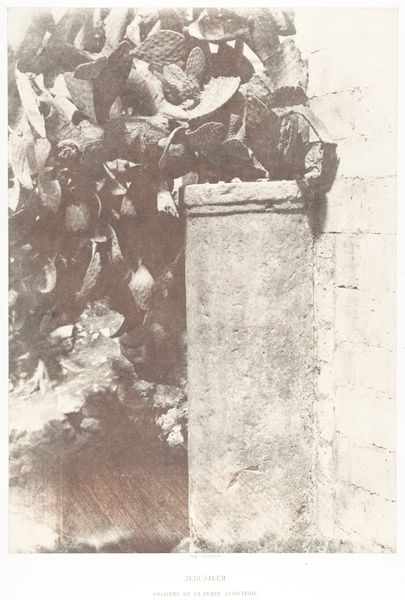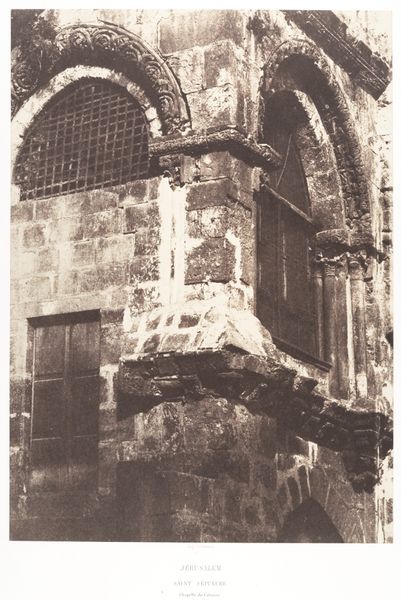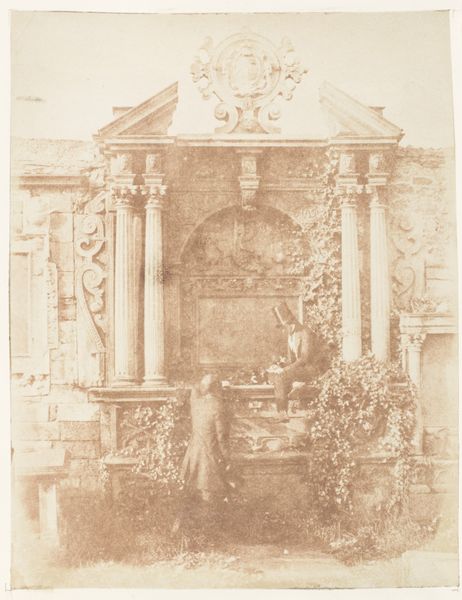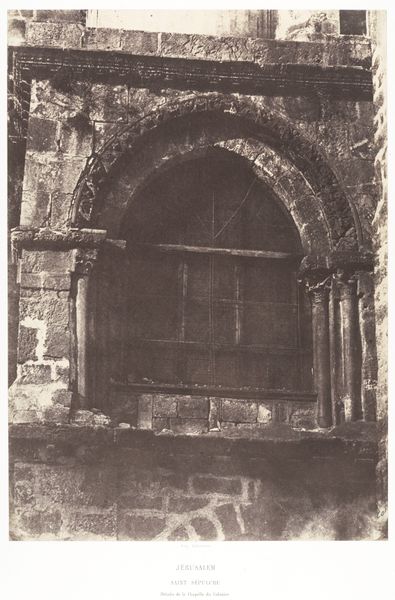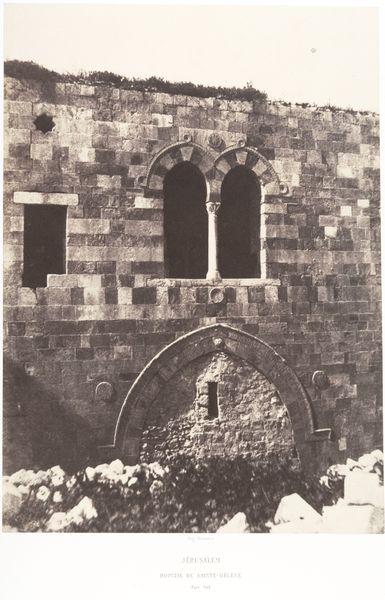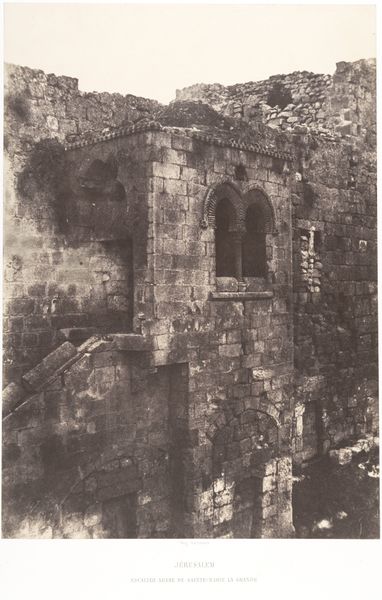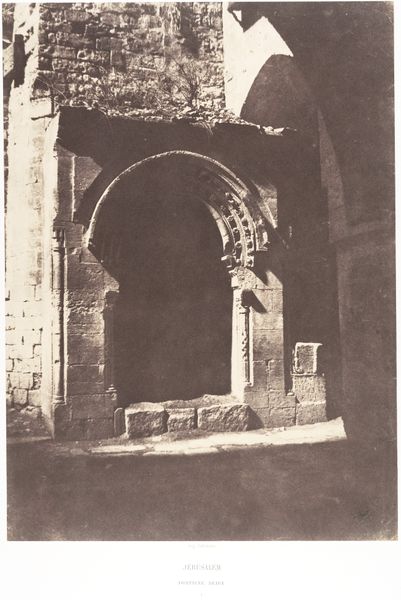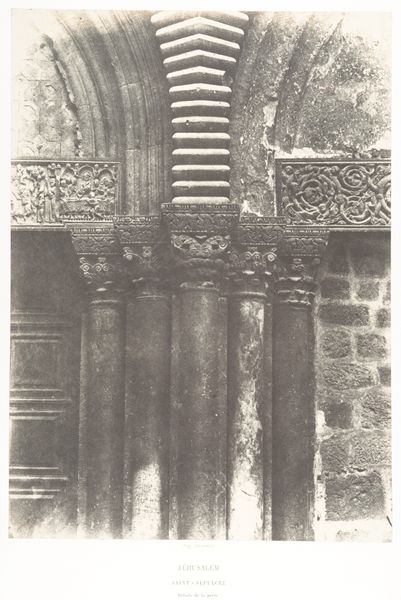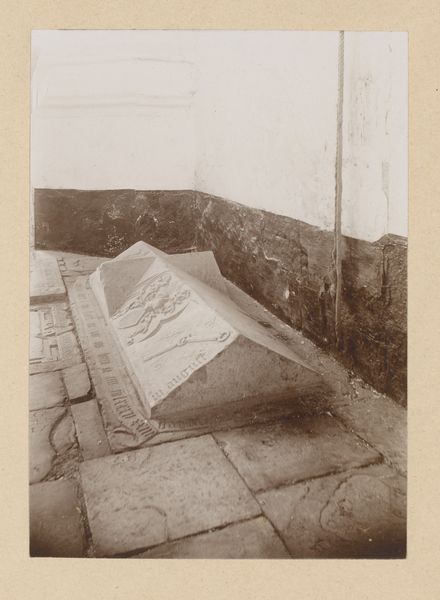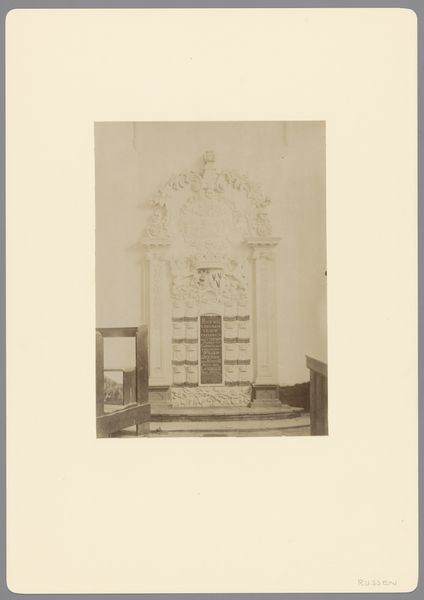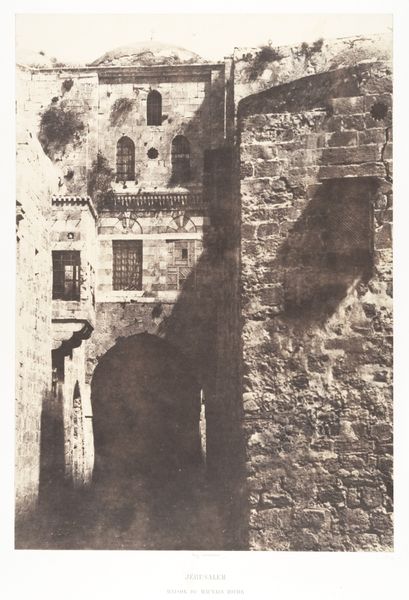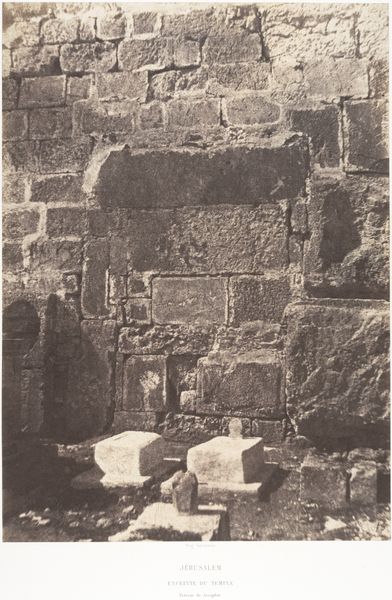
print, daguerreotype, photography, architecture
# print
#
daguerreotype
#
photography
#
orientalism
#
islamic-art
#
architecture
Dimensions: Image: 33.5 x 23.3 cm (13 3/16 x 9 3/16 in.) Mount: 60.1 x 44.8 cm (23 11/16 x 17 5/8 in.)
Copyright: Public Domain
Editor: Here we have Auguste Salzmann’s “Jerusalem, Fenêtre arabe,” a daguerreotype print made sometime between 1854 and 1859. It feels incredibly stark to me, this very formal and direct shot of a stone wall with a blocked window. What can you tell me about it? Curator: What strikes me is Salzmann’s choice of the daguerreotype process itself. Consider the laborious preparation, the highly polished silver-plated copper, the fumes, the exacting exposure times. Photography in the mid-19th century was not a casual act. It was labor, intensive and scientific. Knowing this context, how does it change your view of the image itself? Editor: It makes me think more about what Salzmann wanted to achieve. He couldn't just snap a quick picture, so why choose this particular subject and angle? Curator: Precisely. Let's think about the Orientalist movement in art at the time. Salzmann wasn’t just documenting; he was actively constructing an image of the East for a European audience. Consider the stone itself - the rough texture versus the smooth silver plate on which it's imaged, reflecting on the labor both natural and human that goes into presenting 'Jerusalem' to viewers back home. Editor: So, you're saying that the choice of materials and the labor-intensive process emphasize the constructed nature of this supposedly objective view? Curator: Exactly! This challenges the notion of photography as a purely objective record. Instead, it exposes the choices, the material constraints, and even the cultural biases embedded in the production of the image itself, thus contributing to our understanding of the art market during the Orientalist art movement. Editor: Wow, I hadn't thought about it that way. Considering the effort involved definitely shifts my perception. Thanks! Curator: The daguerreotype here isn't just a picture; it is material evidence of a cultural and commercial exchange.
Comments
No comments
Be the first to comment and join the conversation on the ultimate creative platform.
